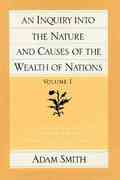Please answer the questions below.
Question 1 (1 point) Saved A government leader determines that the 5% unemployment rate is too high. She asks her staff to research policy options to reduce the rate and a few weeks later is given four options. Each option would reduce the rate by a different amount and at a different cost. The leader studies the options and chooses the one she feels is best for the country. In order, what types of analysis were used in this three-stage chain of events? positive; positive; normative O positive; normative; positive O normative; positive; normative O normative, positive; positiveQuestion 15 (1 point) Saved W Which of the following is caused by a subsidy for sellers of a particular item? (i) an increase in supply (ii) an increase in quantity sold 6 (iii) a leftward shift of demand curve O (1), (1i), and (iii) 9 (1) and (ii) O (ii) and (ifi) 12 only (1) Question 16 (1 point) Saved 15 Which of the following statements is TRUE regarding economic efficiency? 18 Efficient outcomes will make everyone better off. Efficient outcomes are also equitable. 21 O Efficient outcomes rarely make everyone happy. Efficiency is associated with minimizing economic surplus. 24 (1 at ) SavedQuestion 33 (1 point) V Saved Which of the following alternatives would yield the greatest economic surplus? O the most wasteful option the most economically equitable option O the one that will make everyone happy O the most economically efficient optionQuestion 12 (1 point) Saved (Figure: Market for Plastic Bags) In the market for plastic bags shown here, the original equilibrium price is 50 cents per bag. In an effort to reduce plastics usage, a tax is then placed on the buyers of plastic bags. The economic burden of this tax on the seller is cents. Price ($ per bag) $1.00 Supply curve $0.60 $0.50 $0.40 Old demand New demand 40 50 Quantity of plastic bags (millions) 40 60Question 19 (1 point) Saved Which of the following statements is correct? The incidence of a tax is determined by the statutory burden of the tax. O Taxes lead to shortages. Regardless of the statutory burden of a tax, the actual economic burden will depend on the relative elasticities of demand and supply. The economic burden of a quota is always equivalent to the economic burden of a tax. Question 20 (1 point) Saved A subsidy is (i) a negative tax. (ii) a tax rebate given to those who make a specific choice. (iii) a payment made by the government to those who make a specific choice. O (1), (it), and (iii) O (i) and (ii) (ii) and (iti) O (1) onlyQuestion 29 (1 point) Saved (Figure: Market for Plastic Bags) In the market for plastic bags shown here, the original equilibrium price is 50 cents per bag. In an effort to reduce plastics usage, a tax is then placed on the buyers of plastic bags. The incidence of the tax on the buyer is _% and the incidence of the tax on the seller is Price %. ($ per bag) $1.00 Supply curve 12 $0.60 V $0.50 $0.40 15 V Old demand 18 New demand 40 50 Quantity of plastic bags (millions) 21 60, 40 20, 80 24 40, 60 50, 50Question 13 (1 point) Saved A binding price floor leads to: a shortage. a surplus. an equilibrium. a low price. Question 14 (1 point) Saved A price ceiling is: O the maximum price that a seller can charge in a market. the minimum price that a seller can charge in a market. the average price that a seller can charge in a market. any price above the equilibrium price.Question 22 (1 point) Saved (Figure: Market for Logs) A quota of 10,000 logs forest wood per month is placed in the market that is shown in the figure. Sellers are willing to sell the quantity limited by the quota as long as the price is at least: Price $25,000 Supply $22,000 $21,000 $20,000 $19,000 $17,000 $15,000 Demand $13,000 $7,000 8 10 12 Quantity (thousands per month) $20,000 $21,000 $17,000 $19,000Question 23 (1 point) Saved Bae is willing to pay up to $160 for a particular pair of boots. She is able to buy the boots for $120. The marginal cost of producing the boots is $70. Which of the following is TRUE regarding the economic surplus associated with her purchase of the boots? Consumer surplus is $40, and producer surplus is $50. Consumer surplus is $50, and producer surplus is $40. Consumer surplus is $90, and producer surplus is $120. Consumer surplus and producer surplus are the same. Question 24 (1 point) Saved When trade is voluntary, who gains from it? C Either the seller or the buyer gains but not both. O Both the seller and the buyer gain, although not necessarily equally. O Both the seller and the buyer must gain equal amounts. Neither the seller nor the buyer gains, but society in general gains.Question 17 (1 point) Saved Which of the following is an example of a quantity quota? A city sets a limit on the maximum rent that tenants pay. A city awards a construction firm a monopoly over all public housing construction. A city imposes a tax on all people who move into the city. A city enforces zoning laws that restrict the number of housing units. Question 18 (1 point) Saved On a market graph, economic surplus can be identified as the area that is to the: right of the quantity, above the demand curve, and below the supply curve. left of the quantity, above the demand curve, and below the supply curve. right of the quantity and between the demand and supply curves. left of the quantity and between the demand and supply curves
















